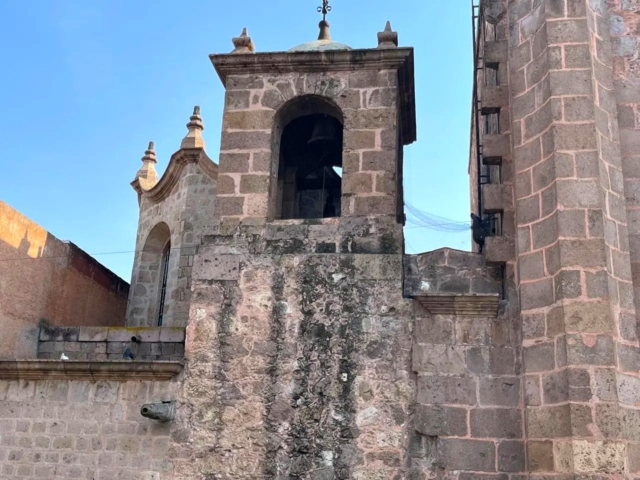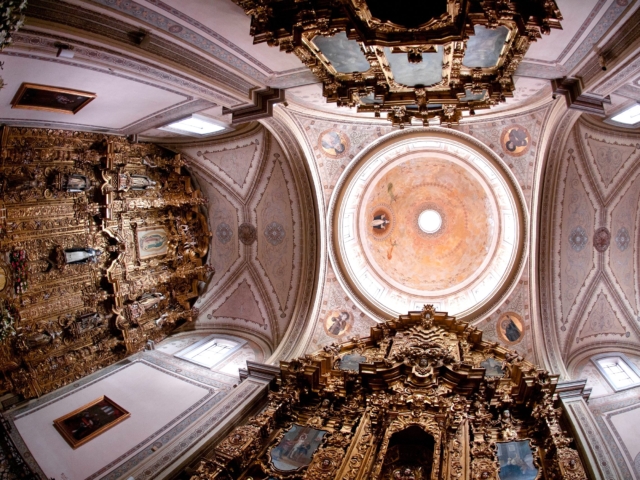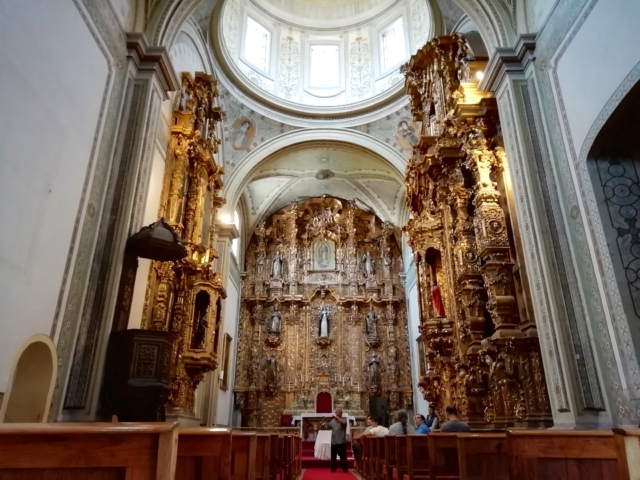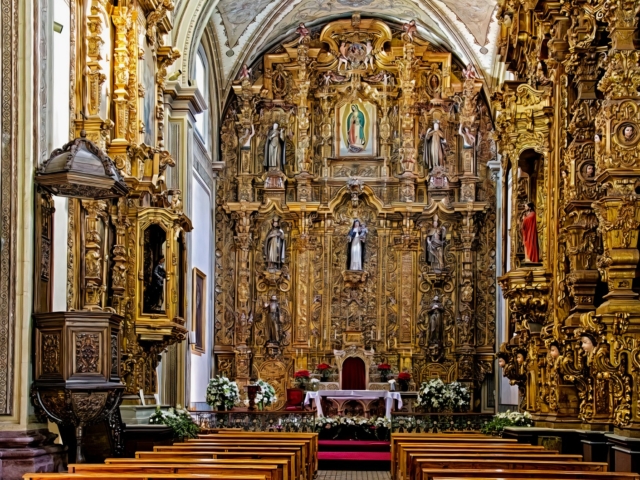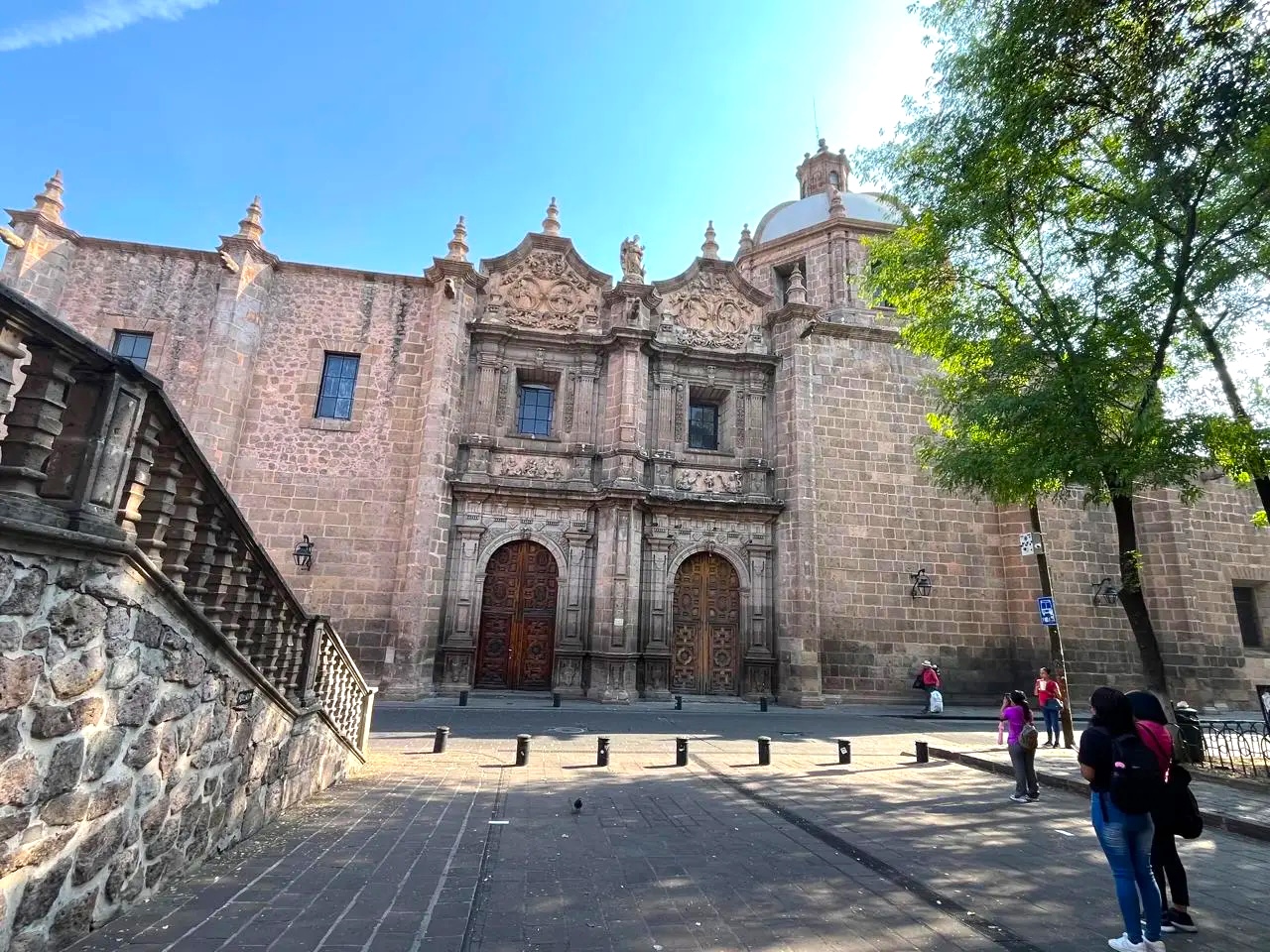
Adress
Santiago Tapia S/N, Centro, 58000 Morelia, Michoacán México.
GPS
19.704864641305, -101.19500935078
Phone
Monday
08:00 – 20:00
Tuesday
08:00 – 20:00
Wednesday
08:00 – 20:00
Thursday
08:00 – 20:00
Friday
08:00 – 20:00
Saturday
08:00 – 20:00
Sunday
08:00 – 20:00
KNOW MORE PLACES
VISITA OTRAS LOCALIDADES
In the center of Morelia, this temple is the only one with a bell tower and not a tower. It is a wonderful baroque jewel with wooden altarpieces symbolic of the vocation for music. It is a wonderful baroque jewel with wooden altarpieces symbolic of the vocation for music.
After exploring every space in the temple and the Conservatory of Roses, two of the most beautiful and significant viceregal estates in Morelia, the old Valladolid, one feels like sitting on a bench to consult the history book and transport oneself back to the hours of the 16th century, when the narrow streets smelled of conquest, of evangelization, of the outline of the city.
It was in those days, at the end of the sixteenth century, when the Dominican nuns arrived in the city and decided to take refuge in one of the most remote corners of the city, until 202 years after the founding of Valladolid, exactly in 1743, work was undertaken on the construction of a baroque style temple, inside which three gilded altarpieces were placed. These altarpieces retain their complex baroque and churrigueresque style.
The temple was built under the instructions of Bishop Martín de Elizacoechea, where the first convent of the Dominican nuns was originally located, which by the way was founded in 1590 and abandoned by its inhabitants during the first third of the 18th century, since the building was totally deteriorated, the premises being used as a school for girls. Thus the College of Santa Rosa de Santa María was created.
De fachada doble o pareada por corresponder, en su época, a un convento de monjas, el templo de estilo barroco exhibe una serie de tableros tallados en cantera muy próximos a los portones y ventanales, junto con imágenes como la de Santo Domingo que permanece sobre el contrafuerte central.
The temple of Santa Rosa de Lima, after the baroque cathedral of Morelia, is the religious site in old Valladolid with the greatest number of sculptural elements.
The reliefs on the magnificent façade depict the Holy Family, which remains above the right door, while on the left side, near the other wooden gate, is the Dominican community, with Saint Rose, to whom the temple is dedicated, in the central part. Saint Thomas Aquinas appears on the panel with the sun of truth on his chest and the dove of the Holy Spirit.
On the same double façade, dating from 1746 and 1756, God the Father, the Holy Spirit and Christ stand out, thus forming the Holy Trinity. There are also four medallions representing, in pairs, Saint Fermin and Saint Francis Xavier, evangelizers and martyrs of the Catholic Church, and Saint Martin of Leon and Saint Teresa, the first being a writer and preacher and the second a writer and reforming mystic.
With such details, the temple's double portal displays its baroque style. There are two gates, a pair of cubes that serve as windows and reliefs carved in the quarry during the viceregal era.
Ambos portones de madera presentan tableros que el aire, la lluvia, el sol y las centurias se han empeñado en deformar y que, no obstante, conservan rasgos de los hombres-vegetal de añejo linaje medieval.
Inside there are three superb panels with a gold finish that captivates the eye, two under the imposing dome, specifically those dedicated to Saint John of Nepomuk and to the Virgin and other saints. One altarpiece faces the other and if one displays male sainthood, the other, on the other hand, displays female sainthood.
Dos retablos laterales de un exquisito dorado anteceden al mayor, el central, que contiene obispos, predicadores y monjas de innegable santidad, acompañados de la Santísima Trinidad y la Virgen de Guadalupe, patrona de los católicos mexicanos.
The central altarpiece depicts the Holy Trinity, the Virgin of Guadalupe, Saint Catherine of Siena, Saint Teresa of Jesus, Saint Fermin, Saint Rose of Lima, Saint Martin, Saint Francis Xavier, Saint Francis Borgia and the demonstrator.
Antecede al altar principal un barandal con figuras de querubines. Están por pares. En medio de cada pareja de querubines se encuentra un cáliz con una hostia, mientras en la parte superior de los mismos cuelgan uvas y hojas de vid.
At the other end of the central altar, almost adjacent to the pair of gates, is the choir above an arcade and the heavy wrought iron gate that in the Colonial period kept the nuns isolated, who participated in the liturgical ceremonies without being observed by the parishioners of that time.
When one looks through the heavy wrought iron gate and looks at the desolate and gloomy space that the nuns once occupied, it seems as if one senses their presence; but what appears in the shadows are not the silhouettes of those women trapped in dark and heavy habits, but a collection of colonial paintings. The premises offer a rich art gallery.
Entre el barandal que antecede al altar central y el coro, casi contiguos al vetusto púlpito de madera y al retablo lateral, el enorme muro del templo muestra pórticos que rematan con ventanas protegidas por rejas de hierro forjado, desde donde uno descubre pequeños recintos que actualmente resguardan algunas imágenes sacras.
Each window is within a portico. Stone frames hold the bars. Decorative details such as leaves painted on the wall surround the windows. All the architectural and decorative elements indicate that in colonial times they were confessionals. They connect to the old Santa Rosa de Santa María Girls' School, considered the first conservatory in America.
The walk of hours passes and one, enthralled, directs one's attention to the canvases, the sacred images, the cherubs and the carved details on the gilded altarpieces, until the whispers of history distract one's attention and remind one that the cells, the corners and the arcades that today form the Conservatory of Roses, one day in the past, during the Viceroyalty, was the Santa Rosa de Santa María Girls' School. It was built on the land formerly occupied by the Catarina nuns, who moved from the place in 1738.
The institution operated in the cloister and also had a music school. The boarders, mostly poor and orphaned Spanish girls, along with some widows, attended classes in sacred singing.
If the baroque façade of the temple is one of the most artistic, beautiful and superb of the old Valladolid, today Morelia, the exterior face of the Conservatory of Roses, once the Girls' School of Santa Rosa de Santa María, is totally sober, since on the ground floor it only has the entrance portico and a few windows, as if it were a fortress, while in the upper part, which was a terrace, there are three sections of arches that give the property a very unique image.
Walking through the cloister, between the arcade and the stone-carved washhouses, one is reminded of the Colegio de Niñas de Santa Rosa de Santa María, a building that had belonged to the Dominican convent of Santa Catalina de Siena, whose musical activity, in both cases, has led to it being considered the most remote antecedent of the Conservatorio de las Rosas.
Fundado en 1743, el Colegio de Niñas de Santa Rosa de Santa María funcionó hasta los días de 1870, fecha en que fue clausurado de manera definitiva tras casi una década de dificultades; sin embargo, los especialistas lo consideran el antecedente y el inicio de lo que han catalogado como el conservatorio más antiguo de América.
Just like the raindrops that have accumulated between the tiles, the musical notes disperse through the corridors and corners of the Conservatory of Roses. They fade away with the hours of dusk like a fleeting and final sigh, at the same time as one closes the latches of history and memories.




